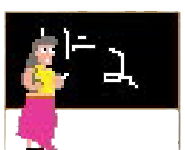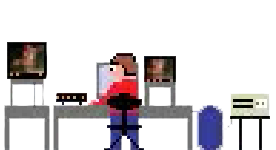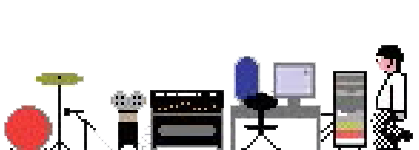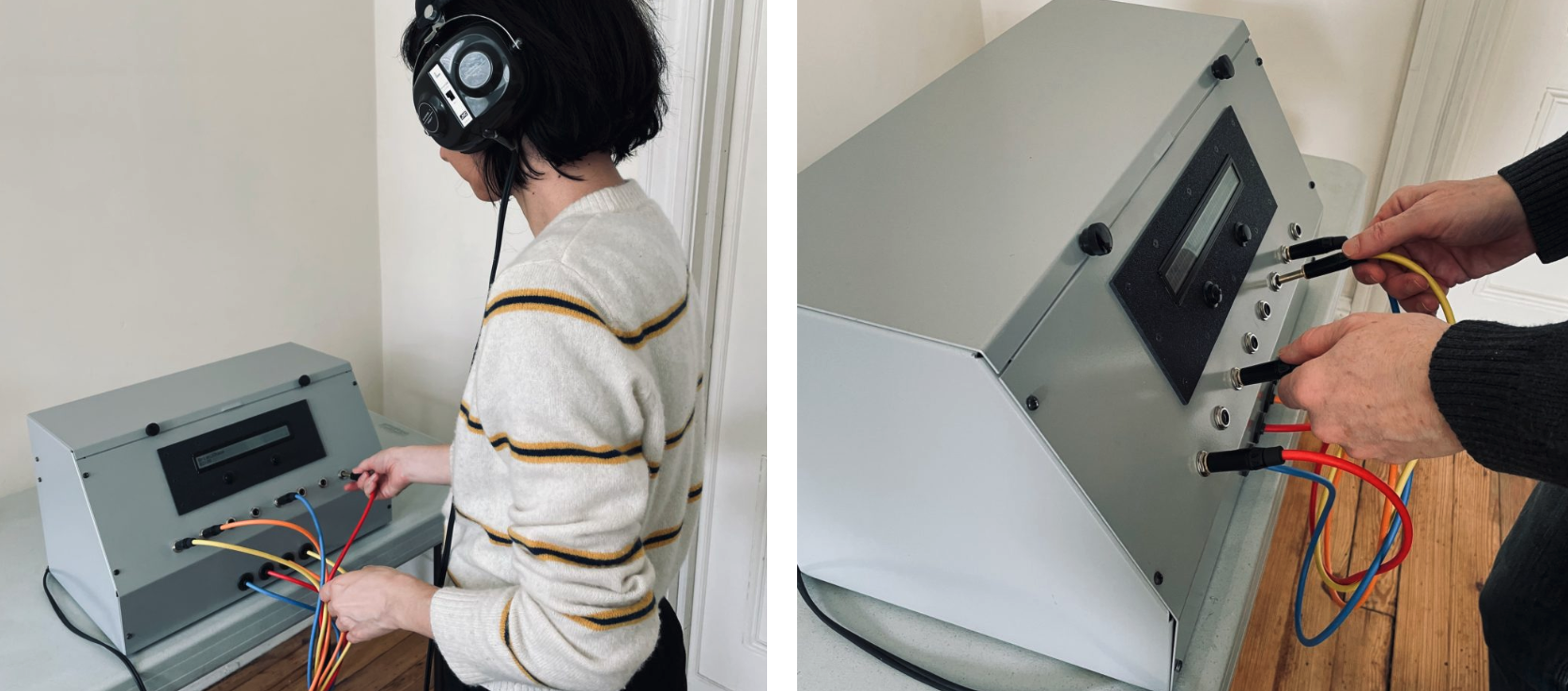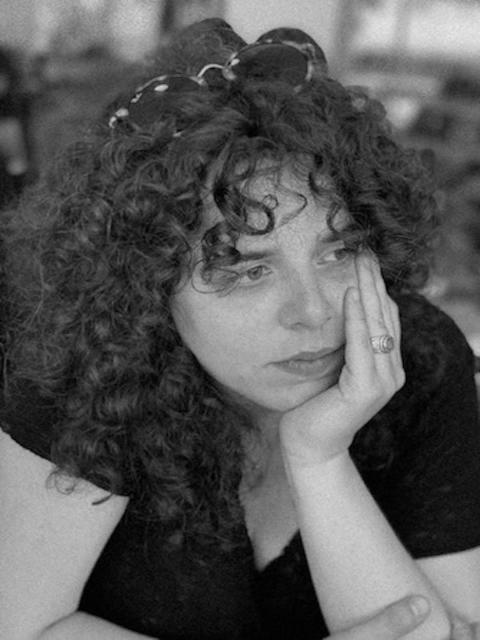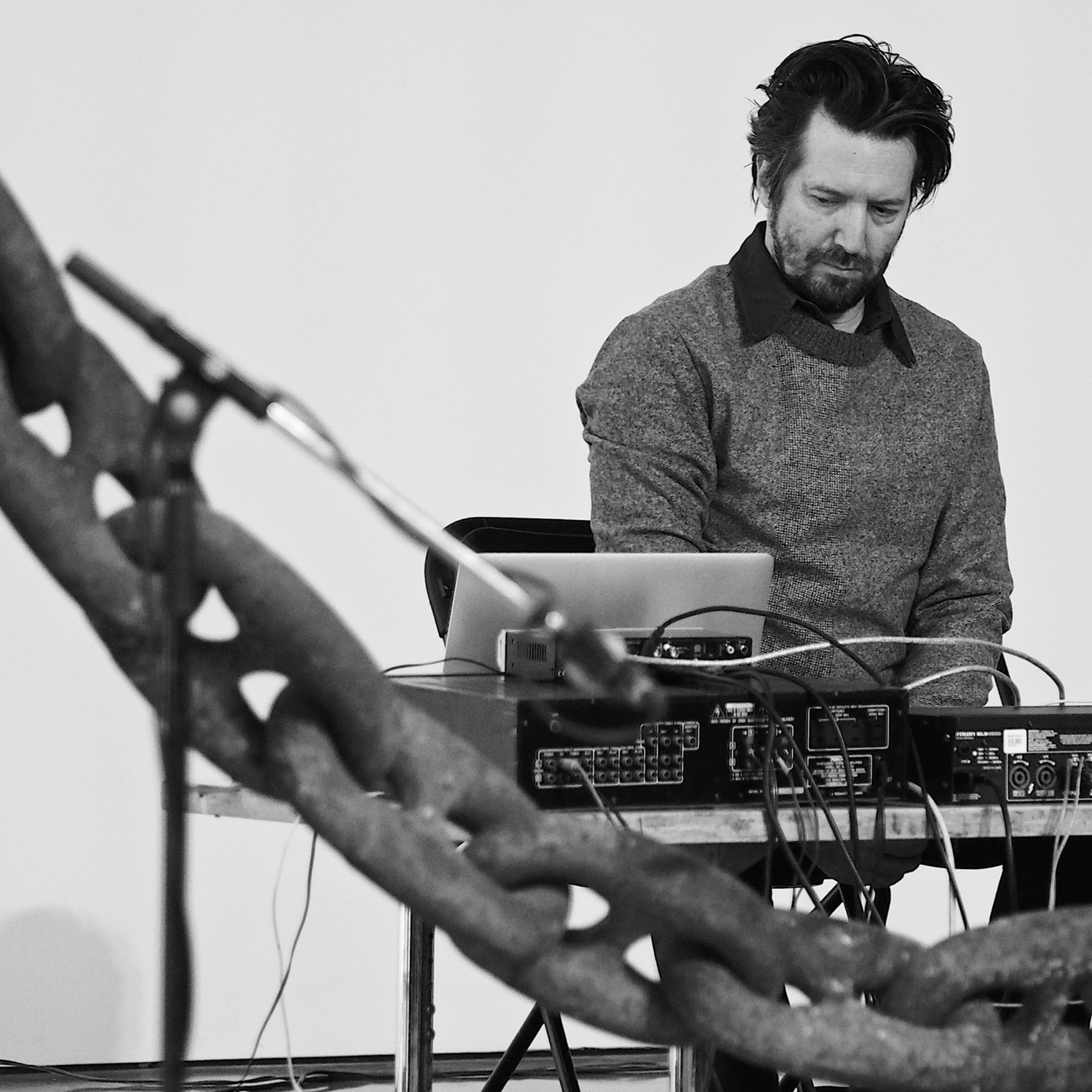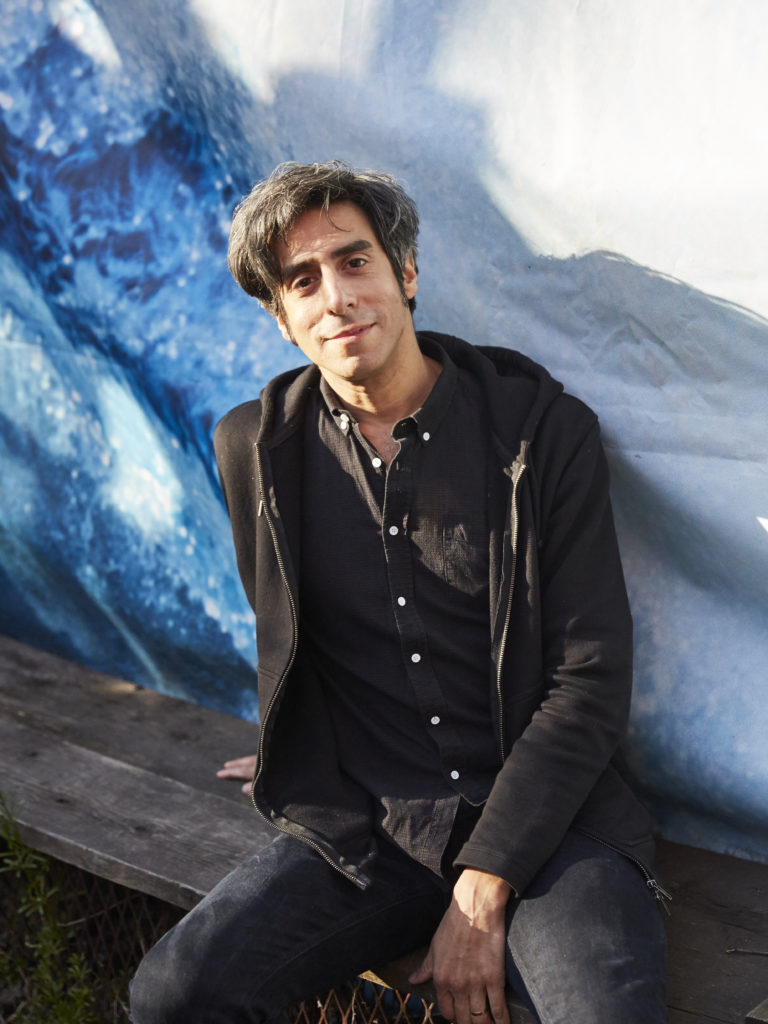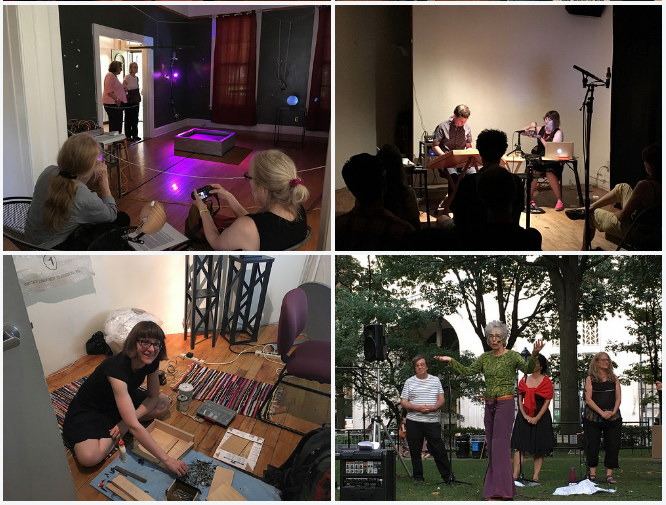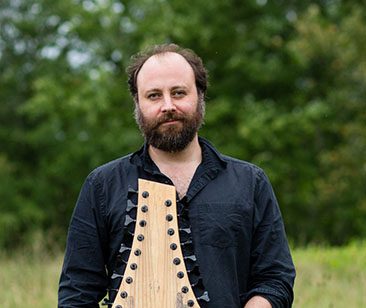urMix is an interactive listening project based on the idea of multitrack recording and surround-sound listening. A listener interacts with urMix using 4 cables routed to 4 channels of output, either a pair of vintage quad headphones or to 4 speakers placed around the room. Since there are 8 tracks of music but only 4 output channels, the listener can only access up to 4 tracks at a time and must physically connect and disconnect the plugs to hear different combinations of tracks.
Location: The Art and Technology Program exhibition in Building 10a, Nolan Park, Governors Island
May 28th – 29th, 2022. Open to the public from 11 am to 5 pm Weekends
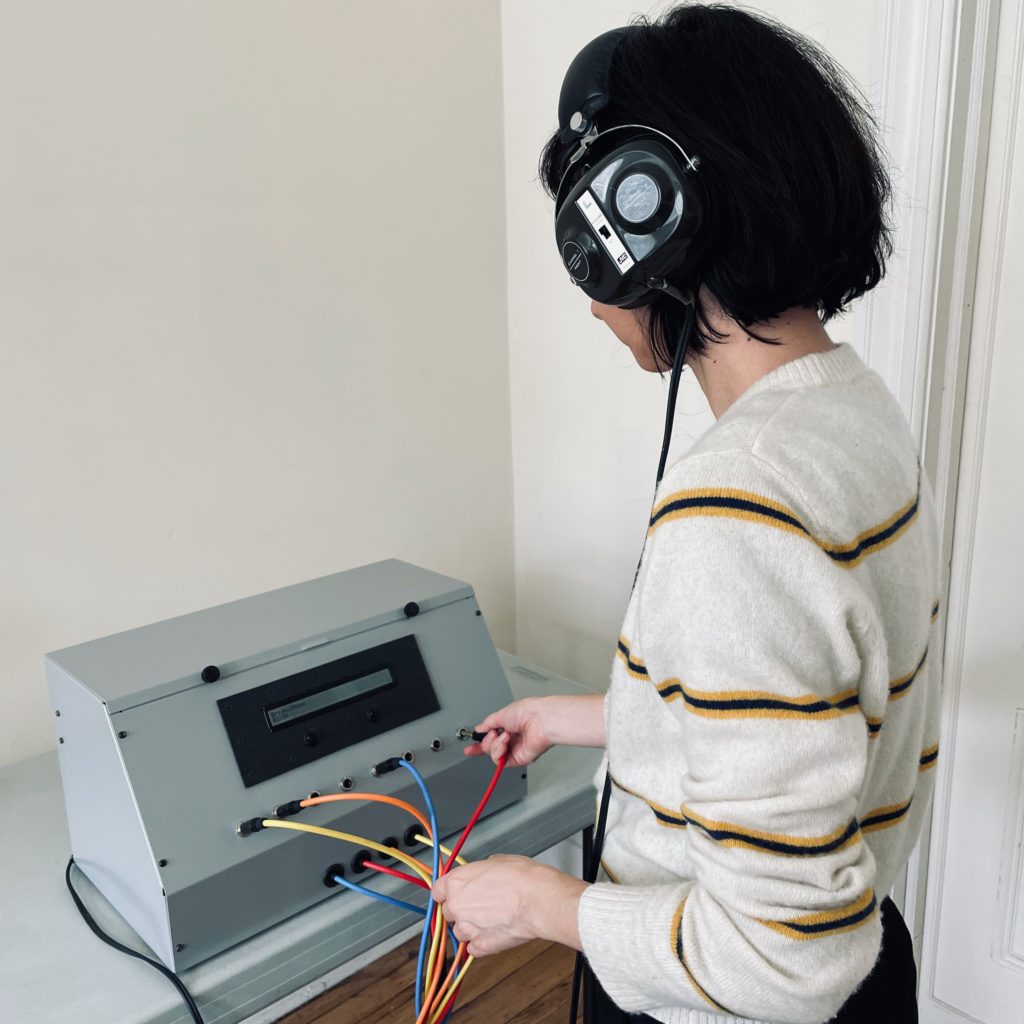
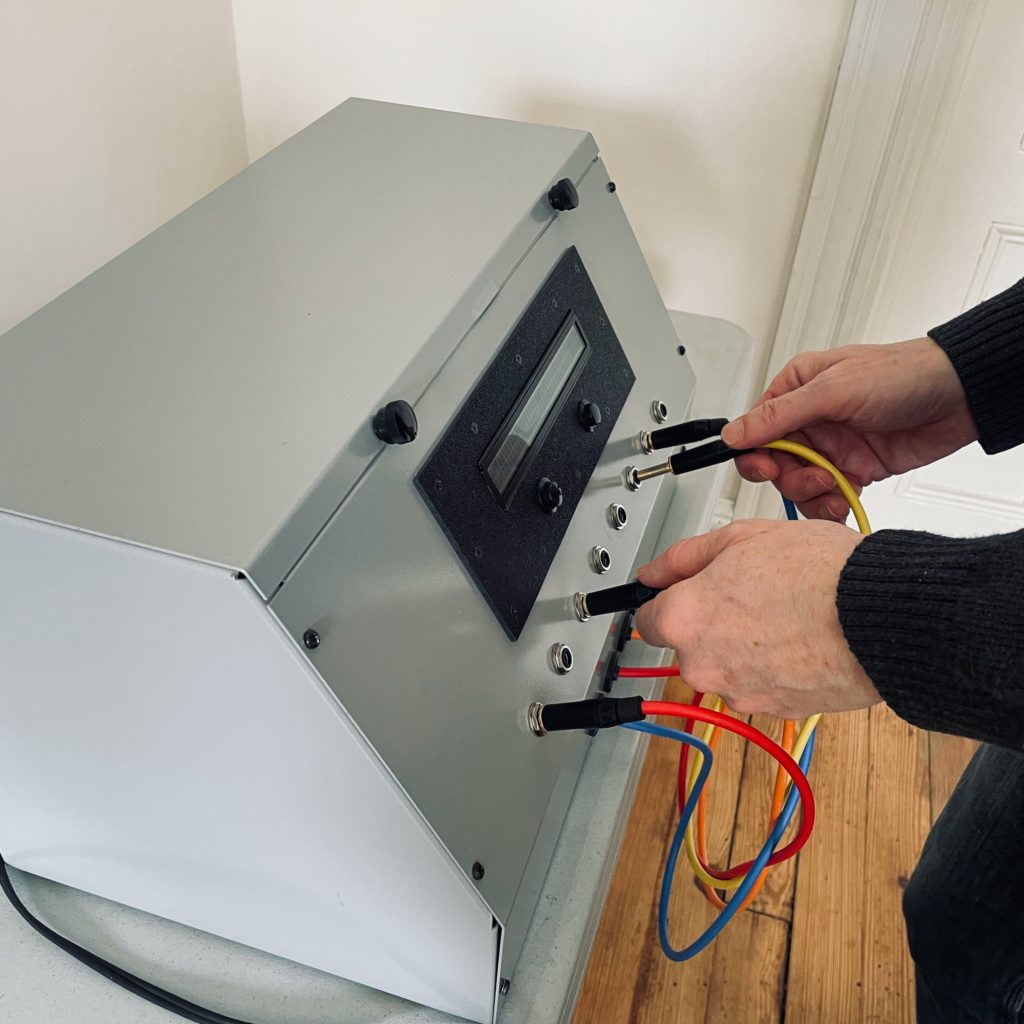
A typical song is organized as tracks – individual parts like instruments, voices and effects, that play simultaneously as a so-called “mix”, usually accomplished by an experienced technician. What we normally hear as a unity, therefore, is actually a series of separate performances and processes that magically gel into an ensemble through the art of sound studio technique and technology. I was curious if this unity could be broken down and pieced together again – not by a technician but by the “end user” – the listener – who rarely considers the “constructed” nature of the typical electronic sound piece. The trick is that no more than four tracks can ever be heard at once, meaning the listener has to complete the song by memory, the memory of the other tracks not heard at that particular moment. So, in one instance, only a snare drum, hand clap, bass and a harmonizing vocal may be audible, meaning the main vocal line (as well as other parts) will need to be “added” in the imagination. Or perhaps the kick drum, hi hat, piano and the reverb effect will be heard, foregrounding an effect that’s usually subliminal. As the listener exchanges channels and hears more parts, the full contents become clear, but so too does the inherent boundaries and even disconnect between the parts become apparent. Even as Humpty-Dumpty is put back together, the cracks show.
urMix contains a collection of disparate pieces and “studies”: familar pop songs, newly commissioned works, scales in various tunings, tones played using different timbres, beats split into 8 parts. Contributing artists include Brian Chase, Lee Gilboa, Dan Joseph, Zach Layton and others to be announced.
Bio
Michael J. Schumacher (concept, curation) has worked with spatialized sound, computers and electronics since the 1980s, creating multi-channel, generative “Room Pieces” presented in galleries, museums, concert halls, public and private spaces. XI Records has published a DVD set of five sound installations as computer applications, playable on up to eight speakers, which may be installed on a computer to create sound environments in the home. Schumacher’s composition “Grid”, a computer-generated score, has been in exhibitions in New York, Barcelona and Houston. His building-wide installation at EMPAC, in Troy New York, ran 24/7 for one year.
A Harvestworks Sponsored Project funded in part by the New York State Council on the Arts with the support of Governor Kathy Hochul and the New York State Legislature.



